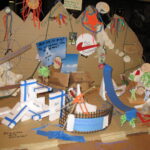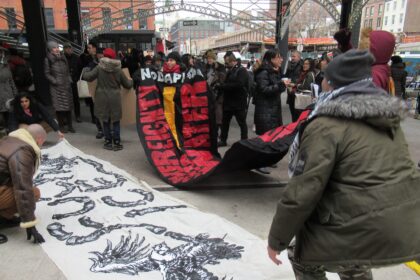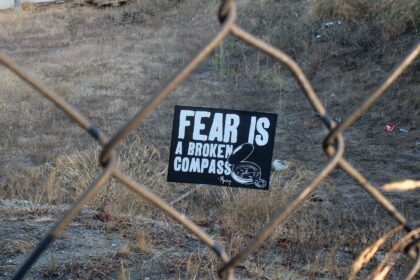Editorial | Winter 2016
Grant Kester
Over the course of the past three issues we’ve had the opportunity to review quite a large number of submissions. The release of the current issue of FIELD provides us with an opportune moment to reflect on some of the tendencies we’ve observed in critical writing focused on socially engaged art, and to outline some of the insights we’ve gained in this process. One of the more notable things we’ve encountered is the difficulty that some writers have in actually talking about specific projects or practices in any detail. In many cases the articles we receive devote the majority of their space to the explication of particular theories which are intended to provide some contextual framing for a given work, even as the presentation of the work itself occupies a relatively small portion of the total text. Moreover, these framing discussions often focus on theoretical positions (the generic virtues of dissensus or agonism are typically invoked) that are sufficiently well established in the field that they don’t require an extended recitation. At the same time, it’s not uncommon for an essay to provide relatively little materialist context for a given project (for example, some account of the unique field of ideological, social, geographic and political forces with which it contends, its relationship to specific forms of resistance or the permutations of class, race, gender or sexual difference that help situate a given network of social actors). We have also encountered some reluctance to acknowledge points of failure, violations of trust, conceptual or practical discontinuities or other instances of apparent dysfunction, confusion or incoherence in a given project.
These tendencies, taken in the aggregate, can result in a writing style that is characterized by a significant level of generalization and the absence of any granular detail focused on the practice itself. Some of this can be attributed to the influence of art practice Ph.D. programs which, in many cases, require a mode of writing that is necessarily programmatic and which tends to discourage any form of self-reflection which might create the perception that the project in question (on which the successful completion of the degree hinges) is in some way failed or incomplete, rather than exemplary. It is also due to an over-reliance on theory alone to organize our critical perception of a given work (the grounding of a project in the context of a specific theory being one of the primary discursive mechanisms employed in art practice Ph.D. programs to validate student work as a legitimate form of academic “research”). To the extent that the institutional structures of the doctoral education process have influenced the methodological and stylistic form taken by critical writing on socially engaged art it can be helpful to recognize the particular constraints they exercise. Having said that, the problems I’m identifying here are hardly unique to the field of art history, or doctoral level art education more generally. In fact, we find similar concerns expressed by scholars in fields such as sociology, anthropology, geography and cultural studies.
At the root of many of these issues is the status of “description”. Too often we find description treated as the merely incidental process of enumerating the discrete stages or features of a given project, often with the goal of presenting those features as illustrations of a particular theoretical paradigm. It might be useful here to recall the distinction between the hermeneutic process of exegesis, the extraction of meaning “out of” a given text, and eisegesis, or reading “into” a given text. In eisegesis we refer the text back to our own a priori assumptions, rather than allowing the text, in all its complexity, to call those assumptions into question. This problematic can occur just as easily in the case of a writer who is seeking to critique a given project (which is then treated as the entirely symptomatic expression of some larger, structuring system of power of which it remains unaware) as in the case of a writer seeking to praise it as the unproblematic and direct realization of the artist’s originary intention (an approach often associated with the artist’s claim that their work produces some tactical disruption of fixed systems of meaning). One must be cautious, of course, with the idea that any interpretation can avoid the projection of the interpreter’s values and beliefs. It is also evident that any cultural practice is marked, implicitly or explicitly, by systematic forms of domination. However, in the pursuit of theoretical legitimacy we have also diminished our capacity to be surprised by the exigencies of practice itself (to the extent that it exceeds both the conscious will of the artist and the recuperative powers of the current social order).
All too often we impose onto practice an epistemological unity, coherence and self-evidence that it does not in fact possess. And, as a result, we neglect the unresolved and contingent processes of meaning production and self-transformation that are at the root of socially engaged art. This vestigial positivism is notable, since art history as a discipline is so often concerned with preserving the internal complexities and contradictions of the work of art, and analyzing its manifold points of both integration with, and contestation of, dominant systems of power. Art historians are able to employ the most ingenious interpretive methods to persuade us that Santiago Sierra’s installations are politically transgressive, that Manet’s bar maid is waging a covert war on capitalist commodification or that Tilted Arc was really a subversive critique of the bureaucratization of public space. And yet, this interpretive virtuosity abandons us when we write about socially engaged art, and any given project becomes the unmediated expression of a pre-existing ideological discourse or creative intentionality.
I would encourage writers to think of description not as a process of routine transcription, but rather, as a conceptually generative act. When teaching art criticism in the past I’ve ask my students to begin by writing at length about a specific project or work, focusing exclusively on the act of description. They are precluded from citing theories, other works of art, past histories or other causal or contextual factors. Instead, they must attend as closely as possible to what is actually before them; the specific form of reality framed and presented by the work of art. In the course of this exercise I’ve found that it is often surprisingly difficult for art historians, who are ostensibly trained to closely observe works of art, to actually describe, in detail, what they see: to trust in, and elaborate on, their own perception of a work. If they are able to push through this epistemological resistance, they frequently undergo a kind of cognitive shift, in which those aspects of a work that appeared to be pre-determined by, and easily assimilated to, existing historical and theoretical narratives become difficult, idiosyncratic, unexpected or confusing.
This strangeness, this difficulty, marks the beginning of a more authentic form of interpretation. It is often only after recognizing what is unexpected in a given work that one is in a position to determine which theoretical framework is most relevant to its analysis, or even to generate new theoretical insight from it. It is also the case that the act of description, when taken to a sufficient level of intensity, inevitably becomes analytic, as we begin to bundle discrete descriptive observations into a larger hermeneutic apparatus capable of accounting for their aggregate effect. And, finally, this analytic phase leads, in due course, to a set of evaluative judgments about a work. In this manner, through a process of de-familiarizing description, we might begin to develop a more nuanced, critical understanding of practices that we are too often prepared to treat in an entirely deterministic manner. We might also de-instrumentalize the act of criticism itself, and throw it open to the possibilities of experiential and cognitive modes that exceed our current understanding of both the aesthetic and the political.
Our third issue features an essay by sociologist Caroline Lee, one of the leading figures in new critiques of deliberative democracy, reflecting on key points of interconnection, and tension, between participatory art practice and the discourse of professional “public engagement” in civil society. Here Lee explores the cultural and political ramifications of the broader participatory turn in contemporary social life. This issue also features a new essay by anthropologist George Marcus, a FIELD editorial board member, in which he reflects on his experience developing collaborations between artists and anthropologists at the headquarters of the World Trade Organization in Geneva, Switzerland, a project that is symptomatic of an important shift towards collaborative research production in contemporary ethnography more generally. Marcus relates this work to a serial analytic system in ethnographic research that he describes as a form of “second order observation”. Philosopher Jason Miller has contributed an illuminating analysis of the problematic adoption of Chantal Mouffe’s concept of ”antagonism” by contemporary art critics and curators writing on relational or participatory art practices. Drawing on the work of curator Nicholas Bourriaud and art historian Claire Bishop, Miller explores the implicit normative assumptions behind both relational aesthetics and the work of its most famous critic.
Also in this issue, art historian Ruben Yepes examines a complex series of works by Bogata’s Mapa Teatro, one of the most important experimental art and theater groups working in Latin America today. As Yepes argues, the C’undúa series, produced between 2001 and 2013 with the residents of the Santa Inés neighborhood, proposes a new model of creative agency that seeks to contest the systematic destruction and erasure of a working class community in Bogata. In a second project concerned with issues of gentrification and urban poverty, Cynthia Hammond and Shauna Janssen describe their experiences in the Griffintown neighborhood in Montreal, where they developed their Points de vue project in response to the city’s call for proposals to renovate the iconic Wellington Tower building. Rather than submitting a design proposal, however, Hammond and Janssen’s team proposed a series of public events that would, as they write, “provide the public consultation that the city . . . appeared to forget”. Bo Zheng, our Corresponding Editor for China, has contributed a new interview with Wu Mali, the ‘godmother’ of community based art in Taiwan, which has one of the most active socially engaged art scenes in the Chinese speaking world. Mali reflects on her own evolution as an activist artist and more recent attempts to reactivate rural cultural traditions in the face of Taiwan’s de-industrializing economy. Finally, this issue features Hammam Aldouri’s review of Nato Thompson’s new book Seeing Power: Art and Activism in the 21st Century. Aldouri examines Thompson’s effort to foreground the spatial dimensions of art and social change in his analysis of projects by Paul Chan and Jeremy Deller, arguing that this approach threatens to “strip social change of its temporal” dimension.











